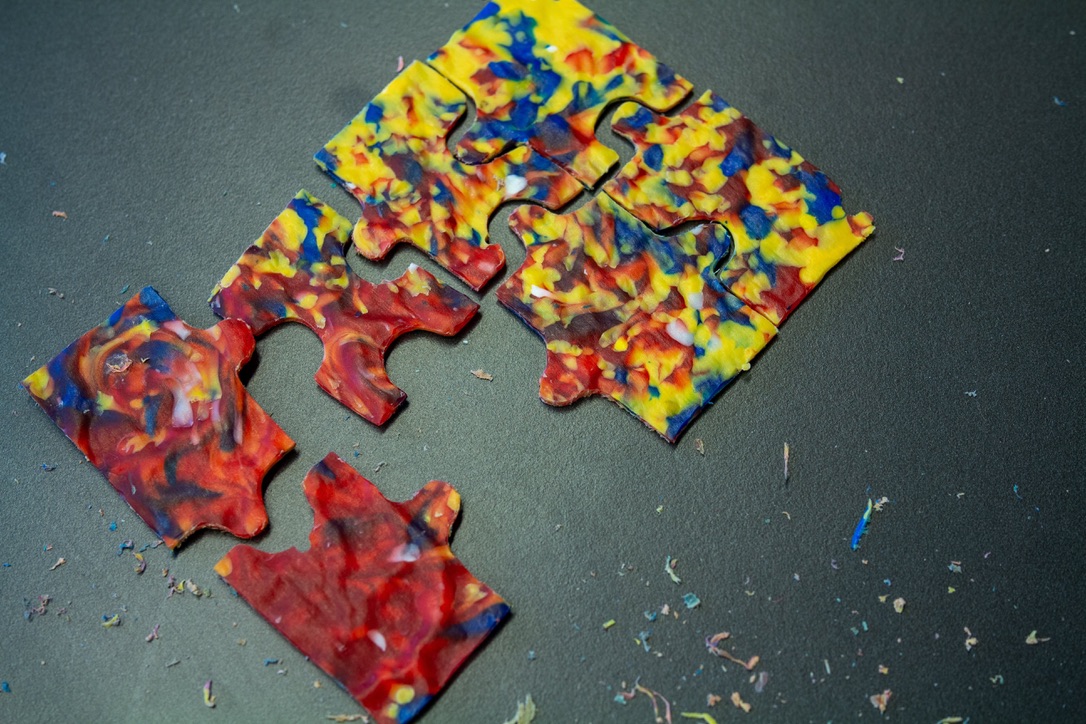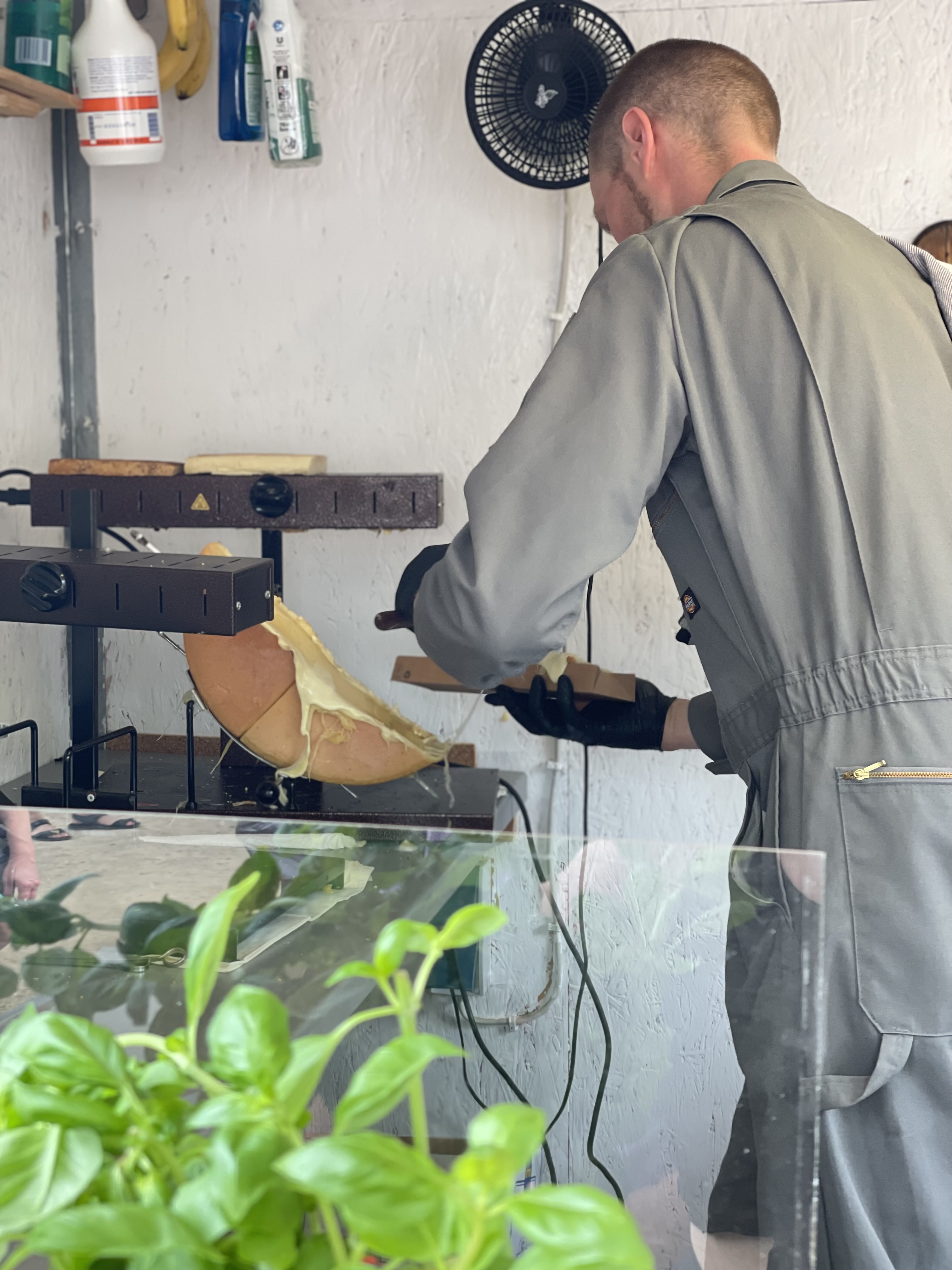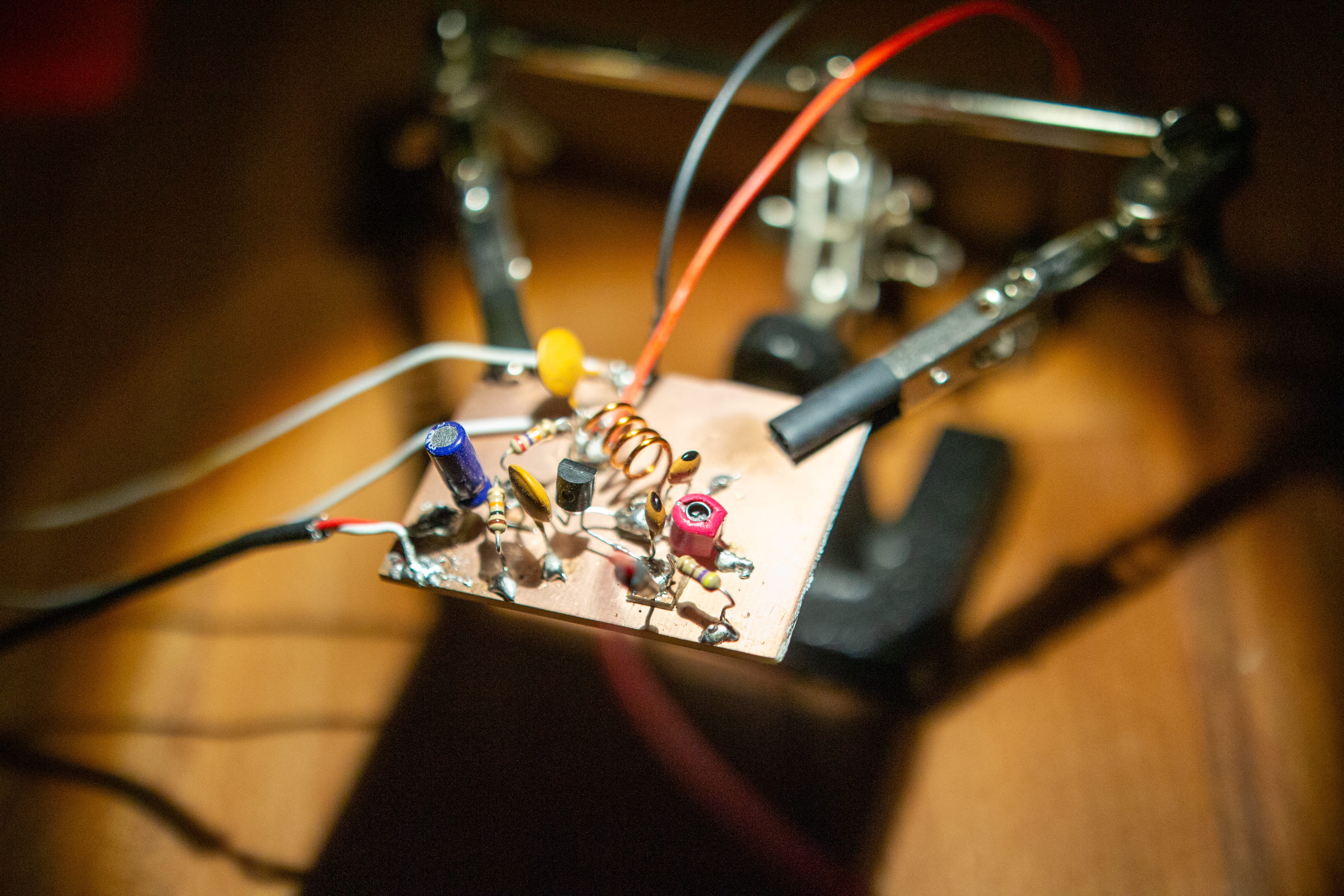AIRASPI Build Log
AI-Raspi Build Log
This should document the rough steps to recreate airaspi as I go along.
Rough Idea: Build an edge device with image recognition and object detection capabilites.
It should be realtime, aiming for 30fps at 720p.
Portability and usage at installations is a priority, so it has to function without active internet connection and be as small as possible.
It would be a real Edge Device, with no computation happening in the cloud.
Inspo from: pose2art
work in progress
Hardware
- Raspberry Pi 5
- Raspberry Pi Camera Module v1.3
- Raspberry Pi GlobalShutter Camera
- 2x CSI FPC Cable (needs one compact side to fit pi 5)
- Pineberry AI Hat (m.2 E key)
- Coral Dual Edge TPU (m.2 E key)
- Raspi Official 5A Power Supply
- Raspi active cooler
Setup
Most important sources used
coral.ai Jeff Geerling Frigate NVR
Raspberry Pi OS
I used the Raspberry Pi Imager to flash the latest Raspberry Pi OS Lite to a SD Card.
Needs to be Debian Bookworm.
Needs to be the full arm64 image (with desktop), otherwise you will get into camera driver hell.
Settings applied:
- used the default arm64 image (with desktop)
- enable custom settings:
- enable ssh
- set wifi country
- set wifi ssid and password
- set locale
- set hostname: airaspi
update
This is always good practice on a fresh install. It takes quite long with the full os image.
sudo apt update && sudo apt upgrade -y && sudo reboot
prep system for coral
Thanks again @Jeff Geerling, this is completely out of my comfort zone, I rely on people writing solid tutorials like this one.
# check kernel version
uname -a
# modify config.txt
sudo nano /boot/firmware/config.txt
While in the file, add the following lines:
kernel=kernel8.img
dtparam=pciex1
dtparam=pciex1_gen=2
Save and reboot:
sudo reboot
# check kernel version again
uname -a
- should be different now, with a -v8 at the end
edit /boot/firmware/cmdline.txt
sudo nano /boot/firmware/cmdline.txt
- add pcie_aspm=off before rootwait
sudo reboot
change device tree
wrong device tree
The script simply did not work for me.
maybe this script is the issue? i will try again without it
curl https://gist.githubusercontent.com/dataslayermedia/714ec5a9601249d9ee754919dea49c7e/raw/32d21f73bd1ebb33854c2b059e94abe7767c3d7e/coral-ai-pcie-edge-tpu-raspberrypi-5-setup | sh
- Yes it was the issue, wrote a comment about it on the gist comment
What to do instead?
Here, I followed Jeff Geerling down to the T. Please refer to his tutorial for more information.
In the meantime the Script got updated and it is now recommended again.
# Back up the current dtb
sudo cp /boot/firmware/bcm2712-rpi-5-b.dtb /boot/firmware/bcm2712-rpi-5-b.dtb.bak
# Decompile the current dtb (ignore warnings)
dtc -I dtb -O dts /boot/firmware/bcm2712-rpi-5-b.dtb -o ~/test.dts
# Edit the file
nano ~/test.dts
# Change the line: msi-parent = <0x2f>; (under `pcie@110000`)
# To: msi-parent = <0x66>;
# Then save the file.
# Recompile the dtb and move it back to the firmware directory
dtc -I dts -O dtb ~/test.dts -o ~/test.dtb
sudo mv ~/test.dtb /boot/firmware/bcm2712-rpi-5-b.dtb
Note: msi- parent sems to carry the value <0x2c> nowadays, cost me a few hours.
install apex driver
following instructions from coral.ai
echo "deb https://packages.cloud.google.com/apt coral-edgetpu-stable main" | sudo tee /etc/apt/sources.list.d/coral-edgetpu.list
curl https://packages.cloud.google.com/apt/doc/apt-key.gpg | sudo apt-key add -
sudo apt-get update
sudo apt-get install gasket-dkms libedgetpu1-std
sudo sh -c "echo 'SUBSYSTEM==\"apex\", MODE=\"0660\", GROUP=\"apex\"' >> /etc/udev/rules.d/65-apex.rules"
sudo groupadd apex
sudo adduser $USER apex
Verify with
lspci -nn | grep 089a
- should display the connected tpu
sudo reboot
confirm with, if the output is not /dev/apex_0, something went wrong
ls /dev/apex_0
Docker
Install docker, use the official instructions for debian.
curl -fsSL https://get.docker.com -o get-docker.sh
sudo sh get-docker.sh
# add user to docker group
sudo groupadd docker
sudo usermod -aG docker $USER
Probably a source with source .bashrc would be enough, but I rebooted anyways
sudo reboot
# verify with
docker run hello-world
set docker to start on boot
sudo systemctl enable docker.service
sudo systemctl enable containerd.service
Test the edge tpu
mkdir coraltest
cd coraltest
sudo nano Dockerfile
Into the new file, paste:
FROM debian:10
WORKDIR /home
ENV HOME /home
RUN cd ~
RUN apt-get update
RUN apt-get install -y git nano python3-pip python-dev pkg-config wget usbutils curl
RUN echo "deb https://packages.cloud.google.com/apt coral-edgetpu-stable main" \
| tee /etc/apt/sources.list.d/coral-edgetpu.list
RUN curl https://packages.cloud.google.com/apt/doc/apt-key.gpg | apt-key add -
RUN apt-get update
RUN apt-get install -y edgetpu-examples
# build the docker container
docker build -t "coral" .
# run the docker container
docker run -it --device /dev/apex_0:/dev/apex_0 coral /bin/bash
# run an inference example from within the container
python3 /usr/share/edgetpu/examples/classify_image.py --model /usr/share/edgetpu/examples/models/mobilenet_v2_1.0_224_inat_bird_quant_edgetpu.tflite --label /usr/share/edgetpu/examples/models/inat_bird_labels.txt --image /usr/share/edgetpu/examples/images/bird.bmp
Here, you should see the inference results from the edge tpu with some confidence values.
If it ain’t so, safest bet is a clean restart
Portainer
This is optional, gives you a browser gui for your various docker containers
Install portainer
docker volume create portainer_data
docker run -d -p 8000:8000 -p 9443:9443 --name portainer --restart=always -v /var/run/docker.sock:/var/run/docker.sock -v portainer_data:/data portainer/portainer-ce:latest
open portainer in browser and set admin password
- should be available under https://airaspi.local:9443
vnc in raspi-config
optional, useful to test your cameras on your headless device. You could of course also attach a monitor, but i find this more convenient.
sudo raspi-config
– interface otions, enable vnc
connect through vnc viewer
Install vnc viewer on mac.
Use airaspi.local:5900 as address.
working docker-compose for frigate
Start this as a custom template in portainer.
Important: you need to change the paths to your own paths
version: "3.9"
services:
frigate:
container_name: frigate
privileged: true # this may not be necessary for all setups
restart: unless-stopped
image: ghcr.io/blakeblackshear/frigate:stable
shm_size: "64mb" # update for your cameras based on calculation above
devices:
- /dev/apex_0:/dev/apex_0 # passes a PCIe Coral, follow driver instructions here https://coral.ai/docs/m2/get-started/#2a-on-linux
volumes:
- /etc/localtime:/etc/localtime:ro
- /home/aron/frigate/config.yml:/config/config.yml # replace with your config file
- /home/aron/frigate/storage:/media/frigate # replace with your storage directory
- type: tmpfs # Optional: 1GB of memory, reduces SSD/SD Card wear
target: /tmp/cache
tmpfs:
size: 1000000000
ports:
- "5000:5000"
- "8554:8554" # RTSP feeds
- "8555:8555/tcp" # WebRTC over tcp
- "8555:8555/udp" # WebRTC over udp
environment:
FRIGATE_RTSP_PASSWORD: "******"
Working frigate config file
Frigate wants this file wherever you specified earlier that it will be.
This is necessary just once. Afterwards, you will be able to change the config in the gui.
mqtt:
enabled: False
detectors:
cpu1:
type: cpu
num_threads: 3
coral_pci:
type: edgetpu
device: pci
cameras:
cam1: # <------ Name the camera
ffmpeg:
hwaccel_args: preset-rpi-64-h264
inputs:
- path: rtsp://192.168.1.58:8900/cam1
roles:
- detect
cam2: # <------ Name the camera
ffmpeg:
hwaccel_args: preset-rpi-64-h264
inputs:
- path: rtsp://192.168.1.58:8900/cam2
roles:
- detect
detect:
enabled: True # <---- disable detection until you have a working camera feed
width: 1280 # <---- update for your camera's resolution
height: 720 # <---- update for your camera's resolution
mediamtx
install mediamtx, do not use the docker version, it will be painful
double check the chip architecture here, caused me some headache
mkdir mediamtx
cd mediamtx
wget https://github.com/bluenviron/mediamtx/releases/download/v1.5.0/mediamtx_v1.5.0_linux_arm64v8.tar.gz
tar xzvf mediamtx_v1.5.0_linux_arm64v8.tar.gz && rm mediamtx_v1.5.0_linux_arm64v8.tar.gz
edit the mediamtx.yml file
working paths section in mediamtx.yml
paths:
cam1:
runOnInit: bash -c 'rpicam-vid -t 0 --camera 0 --nopreview --codec yuv420 --width 1280 --height 720 --inline --listen -o - | ffmpeg -f rawvideo -pix_fmt yuv420p -s:v 1280x720 -i /dev/stdin -c:v libx264 -preset ultrafast -tune zerolatency -f rtsp rtsp://localhost:$RTSP_PORT/$MTX_PATH'
runOnInitRestart: yes
cam2:
runOnInit: bash -c 'rpicam-vid -t 0 --camera 1 --nopreview --codec yuv420 --width 1280 --height 720 --inline --listen -o - | ffmpeg -f rawvideo -pix_fmt yuv420p -s:v 1280x720 -i /dev/stdin -c:v libx264 -preset ultrafast -tune zerolatency -f rtsp rtsp://localhost:$RTSP_PORT/$MTX_PATH'
runOnInitRestart: yes
also change rtspAddress: :8554
to rtspAddress: :8900
Otherwise there is a conflict with frigate.
With this, you should be able to start mediamtx.
./mediamtx
If there is no error, you can verify your stream through vlc under rtsp://airaspi.local:8900/cam1 (default would be 8554, but we changed it in the config file)
Current Status
I get working streams from both cameras, sending them out at 30fps at 720p. frigate, however limits the display fps to 5, which is depressing to watch, especially since the tpu doesnt even break a little sweat.
Frigate claime that the TPU is good for up to 10 cameras, so there is headroom.
The stram is completely errant and drops frames left and right. I have sometimes seen detect fps of 0.2, but the TPU speed should definitely not be the bottleneck here. Maybe attach the cameras to a separate device and stream from there?
The biggest issue here is that the google folx seems to have abandoned the coral, even though they just released a new piece of hardware for it. Their most RECENT python build is 3.9. Specifically, pycoral seems to be the problem there. without a decent update, I will be confined to debian 10, with python 3.7.3. That sucks. There are custom wheels, but nothing that seems plug and play.
About the rest of this setup: The decision to go for m.2 E key to save money, instead of spending more on the usb version was a huge mistake. Please do yourself a favor and spend the extra 40 bucks. Technically, its probably faster and better with continuous operation, but i have yet to feel the benefit of that.
TODOs
- add images and screenshots to the build log
- Check whether vdo.ninja is a viable way to add mobile streams. then Smartphone stream evaluation would be on the horizon.
- Bother the mediamtx makers about the libcamera bump, so we can get rid of the rpicam-vid hack. I suspect there is quirte a lot of performance lost there.
- tweak the frigate config to get snapshots and maybe build an image / video database to later train a custom model.
- worry about attaching an external ssd and saving the video files on it.
- find a way to export the landmark points from frigate. maybe send them via osc like in pose2art?
- find a different hat that lets me access the other TPU? I have the dual version, but can currently only acces 1 of the 2 TPUs due to hardware restrictions.




